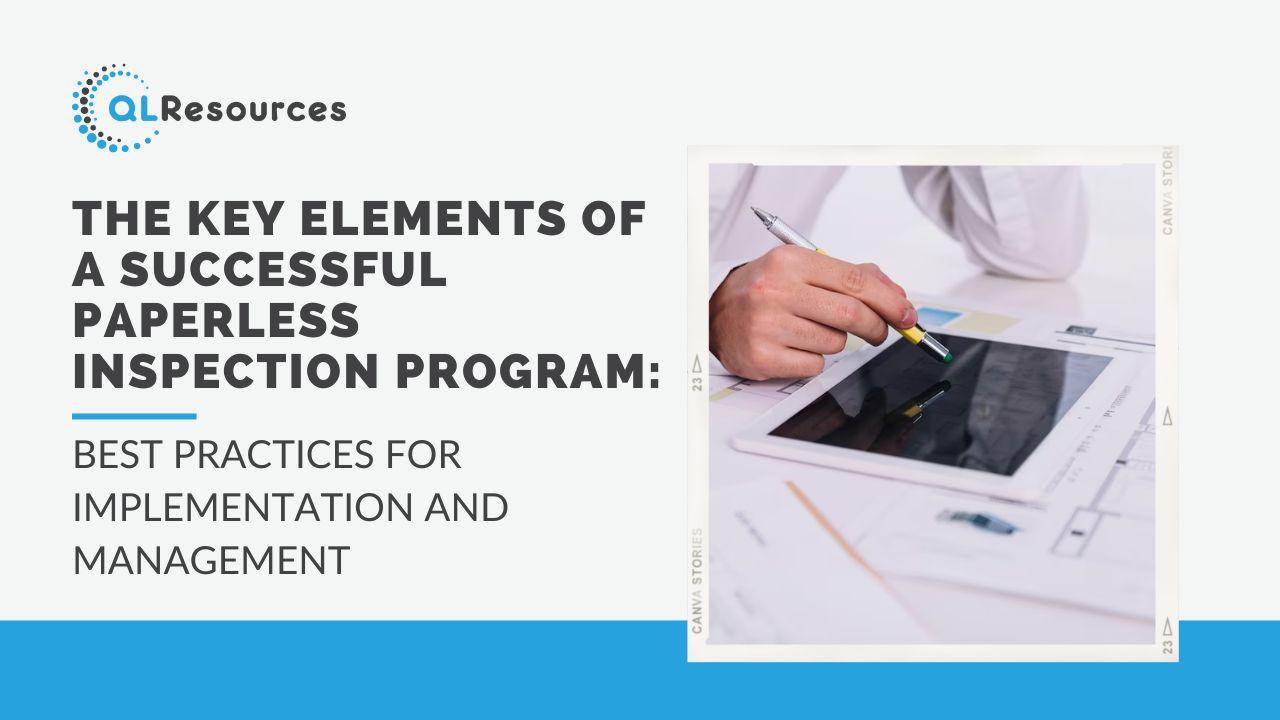
As technology continues to transform industries, paperless inspection programs have gained traction, offering numerous benefits such as increased efficiency, streamlined processes, and reduced environmental impact. In this blog post, we will explore the key elements necessary for a successful paperless inspection program and provide best practices for its implementation and management.
1. Comprehensive Digital Infrastructure: Highlight the importance of establishing a robust digital infrastructure to support the paperless inspection program. Discuss the need for reliable hardware, such as tablets or mobile devices, and secure cloud-based storage systems to store and access inspection data.
2. User-Friendly Mobile Applications: Emphasise the significance of user-friendly mobile applications tailored for inspectors. Discuss the features and functionalities necessary for efficient data collection, including intuitive interfaces, digital checklists, photo and video capabilities, real-time synchronisation, and offline access.
3. Standardised Inspection Templates and Checklists: Explain the value of standardised inspection templates and checklists in ensuring consistency and accuracy across inspections. Discuss the benefits of digital templates that can be easily customised and updated, allowing inspectors to capture all necessary data and perform thorough inspections.
4. Integration with Back-End Systems: Discuss the importance of seamless integration between the paperless inspection program and back-end systems, such as data management or reporting platforms. Explain how integration enables automatic data synchronisation, real-time reporting, and data analysis, enhancing overall efficiency and decision-making processes.
5. Secure Data Storage and Privacy Measures: Address the crucial aspect of data security and privacy in a paperless inspection program. Discuss encryption protocols, access controls, and other measures to protect sensitive information. Highlight compliance with relevant data protection regulations, such as GDPR or HIPAA, depending on the industry.
6. Training and Support for Inspectors: Highlight the significance of providing comprehensive training and ongoing support to inspectors during the transition to a paperless inspection program. Discuss the need for thorough training on mobile applications, data entry protocols, and troubleshooting. Offer resources and avenues for assistance when inspectors encounter challenges.
7. Continuous Improvement and Adaptability: Encourage a culture of continuous improvement and adaptability within the paperless inspection program. Discuss the importance of soliciting feedback from inspectors and stakeholders to identify areas for enhancement. Emphasise the need for regular updates and adjustments to address evolving requirements and technological advancements.
8. Performance Monitoring and Data Analysis: Explain the benefits of leveraging the digital nature of the paperless inspection program to monitor performance and analyse data. Discuss the utilisation of data analytics tools to identify trends, detect anomalies, and generate actionable insights for process optimisation and decision-making.
Conclusion: Summarise the key elements necessary for a successful paperless inspection program, including a robust digital infrastructure, user-friendly mobile applications, standardised templates, secure data storage, training and support, adaptability, and performance monitoring. Emphasise the potential benefits of going paperless, such as increased efficiency, improved data accuracy, and enhanced overall inspection processes. Encourage organisations to embrace the digital transformation of inspection programs for long-term success.
Join our community and never miss an update! Subscribe to our newsletter and blog to stay up-to-date on the latest trends, tips, and insights in your area of interest. Don’t miss out on exclusive content and promotions. Sign up now and be a part of our growing community!